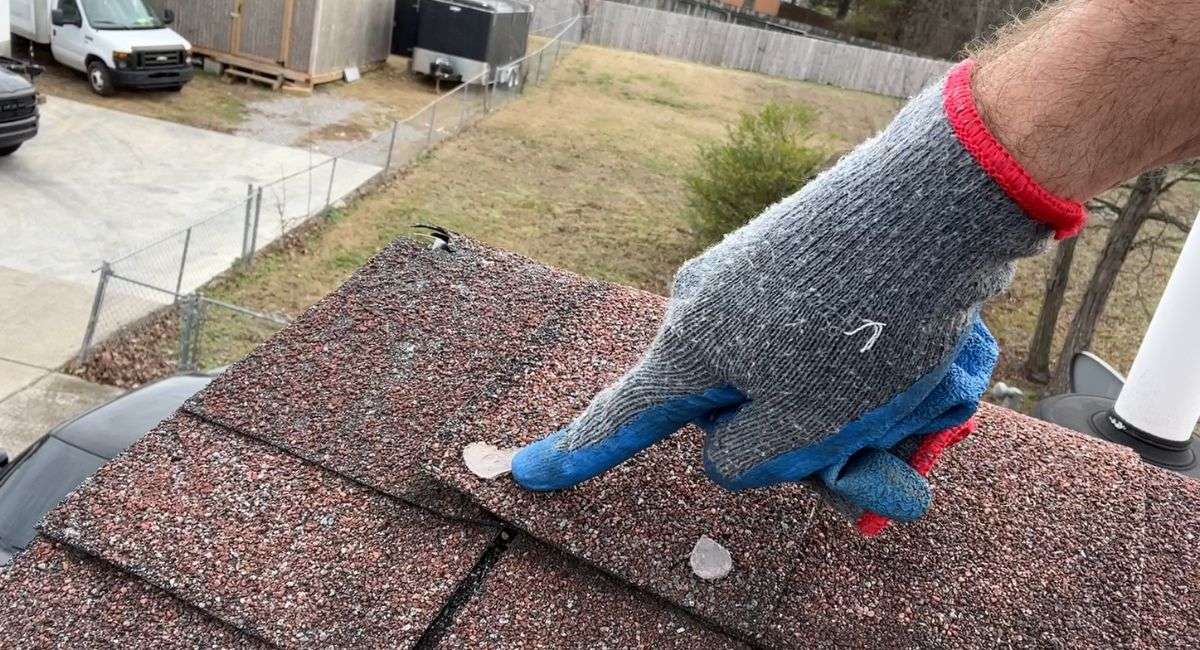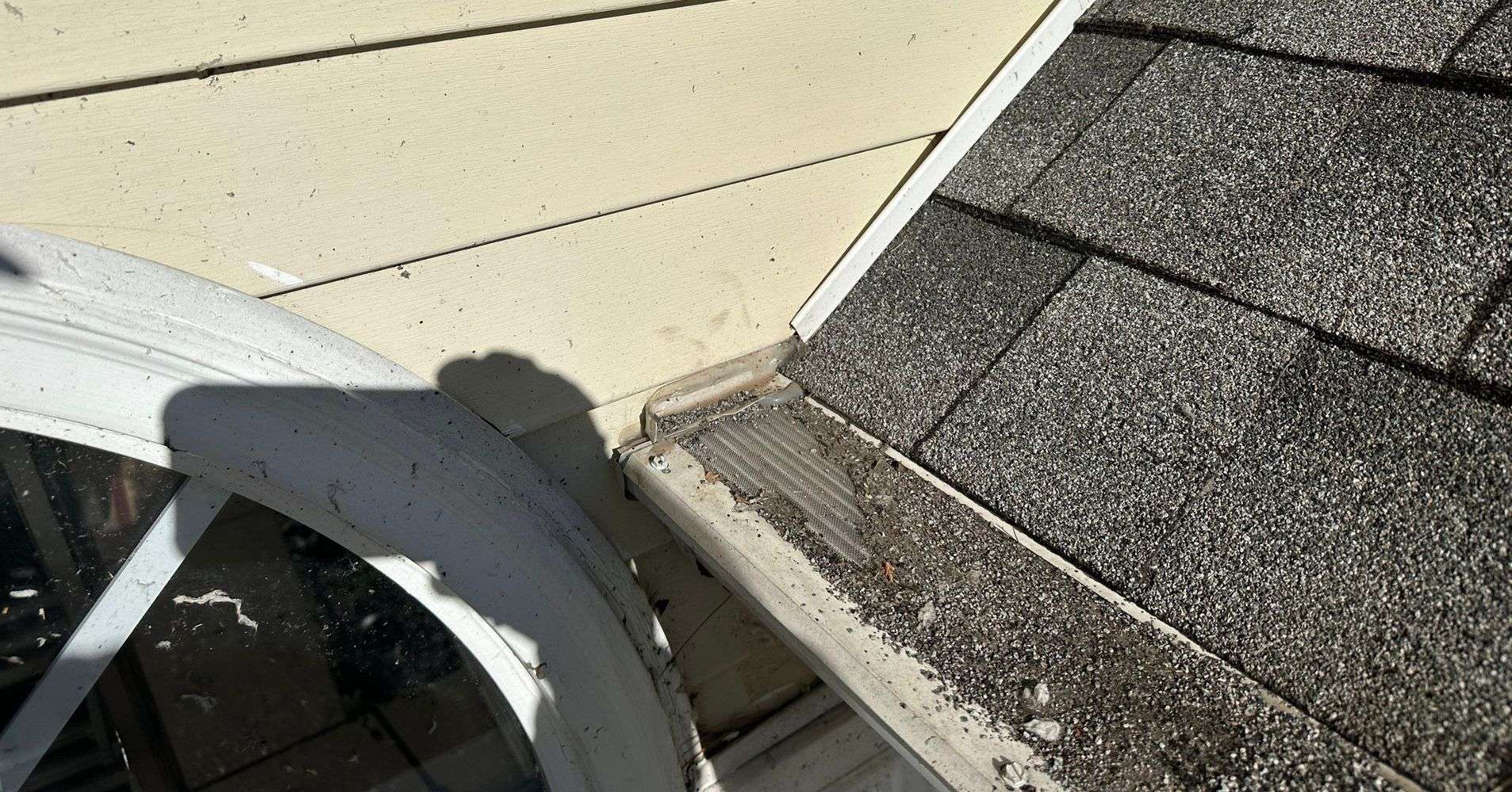What Causes Damage to Asphalt Shingle Roofs?
Asphalt roofs are a go-to choice for many homes and businesses because they’re durable, affordable, and look great. Available in various styles and colors, they boost curb appeal while protecting your property. But, like anything else, asphalt shingles aren’t invincible—they can wear down over time.
- Heavy rain, hail, snow, and strong winds are some of the biggest culprits that can cause shingle damage like cracking, curling, or coming loose.
- Prolonged sun exposure and intense heat can also take a toll, leading to fading, warping, or the loss of granules that provide UV protection.
- On top of that, tree branches scraping against the roof, moss or algae growth, and built-up debris can speed up wear and tear.
- Improper installation, like poor alignment or inadequate sealing, can leave your roof vulnerable to leaks and structural issues.
Knowing what causes damage to asphalt shingles is key for homeowners and roofing pros. Spotting these issues early on means you can tackle them before they turn into bigger headaches. Regular maintenance, proper cleaning, and timely repairs can make a huge difference in keeping your roof in top shape.
This blog covers what damages asphalt shingles, how it impacts your roof, and practical tips to prevent these issues. Protect your roof, home, and investment!
Common Types of Roofing Shingle Damage
UV Radiation
One of the primary types of roof damage are weather-related factors, with ultraviolet (UV) radiation from the sun being one of the most common culprits. Prolonged exposure to UV rays degrades the asphalt in shingles over time, causing them to become brittle, crack, or lose their protective granules. This granule loss not only reduces the aesthetic appeal of the roof but also exposes the underlying asphalt and fiberglass layers to the elements, significantly reducing the shingles’ lifespan.
Additionally, frequent temperature fluctuations can exacerbate this damage by causing thermal expansion and contraction, a process where shingles repeatedly expand in the heat and contract in the cold. Over time, this cycle can lead to warping, curling, or buckling of the shingles, leaving the roof vulnerable to leaks and further damage.
Storm Damage
Storm damage is one of the most significant threats to asphalt shingle roofs and is often the reason for a large number of insurance claims in certain parts of the United States. Wind damage can lift or completely tear shingles off the roof, particularly those that are not properly secured or are already weakened due to age or prior damage. High winds can also loosen nails or adhesive seals, making the shingles more susceptible to future damage.
Hail damage is another major concern, as the impact of hailstones can bruise shingles (you’ll see dark spots), breaking the protective granules on the surface. This degranulation exposes the asphalt and fiberglass layers beneath, leaving the shingles vulnerable to UV radiation, moisture infiltration, and rapid deterioration. In severe cases, hail can puncture shingles entirely, leading to immediate leaks.
Storms with tornados or strong winds can cause even more catastrophic damage, including ripping off entire sections of the roof or causing trees and large debris to fall onto the house, potentially puncturing or collapsing the roof altogether. Homeowners insurance policies typically cover storm-related damage, making it essential to file a claim if your roof sustains severe damage.
If you suspect wind, hail, or other storm damage, it’s worth consulting with your insurance company or a roofing specialist to assess the extent of the damage. Visit our roof insurance claim help page to learn more.

Moisture Infiltration
Moisture infiltration might not seem like a big deal at first, but it can cause serious damage to asphalt shingle roofs over time. One common culprit is poor attic ventilation, which traps heat and humidity, leading to condensation under the roof deck. That trapped moisture can weaken your shingles and even the wooden structure beneath them, eventually causing problems like rot, mold, and mildew. Beyond damaging your roofing material, mold and mildew can also create health risks for everyone in the house.
Another big cause of water damage is older, poorly installed or damaged flashing around areas like chimneys, vents, or skylights. Flashing is supposed to block water from leaking into these vulnerable spots, but when it’s worn out or not installed correctly, it can let water sneak in. Once that happens, you could be looking at stained ceilings, peeling paint, and even structural damage if it’s not dealt with quickly. Click here to learn more about flashing problems.

Debris Build-Up
Keeping your roof in good shape means paying attention to things like debris build-up, which can seriously damage it over time. Leaves, branches, and other stuff can pile up on your roof, trapping moisture and encouraging the growth of algae, moss, or lichen. These organic materials can break down your shingles and hurt their performance, leading to faster wear and tear.
Bad Installation or Lack of Maintenance
A lot of problems with asphalt shingles come down to poor installation or skipped maintenance. Cutting corners with cheap materials, bad fastening techniques, or ignoring the manufacturer’s guidelines during installation can weaken your roof from the start. On top of that, neglecting basic upkeep—like cleaning gutters, checking for damage, or fixing broken shingles—can make things worse over time. Hiring the cheapest roofer might save money upfront but will likely cost you more in repairs later.

Aging and Wear
Asphalt shingles naturally wear out over time due to exposure to rain, snow, and sunlight. Regular maintenance is key to helping them last as long as possible. Most asphalt shingles last about 20-30 years, but that depends on factors like weather conditions and how well they’re cared for. If you reshingle over existing shingles, you’re shortening their lifespan by adding extra weight and creating more nail holes, which can let water in.
As shingles age, they start to get brittle and break down. One clear sign of this is when the asphalt granules that coat the shingles start coming loose—a process called degranulation (see image below). You might notice small gray specks in your gutters or a silvery shine on your roof. These are signs your shingles might need attention!

Is Homeowners Insurance an Option?
Yes, homeowners insurance can be an option for covering damage to asphalt shingle roofs. As mentioned earlier, storm-related damage—such as damage caused by hail, strong winds, or falling debris—is typically covered under most standard homeowners insurance policies. This means that if your roof suffers damage during a severe weather event, your policy may help cover the costs of repairs or even a complete roof replacement.
However, it’s essential to confirm the specifics of your policy and consult directly with your insurance company to ensure that storm-related damages are indeed included in your coverage.
To determine if your roof damage qualifies for an insurance claim, it’s a good idea to get an independent inspection from a trusted roofing company. Most roofing inspections are free, so there’s little risk involved. Additionally, a roofing contractor can act as a liaison between you and your insurance company. If your claim is denied or undervalued, they can advocate on your behalf, providing evidence to demonstrate that the damage to your asphalt shingles should be covered.
Worried About Damage to Your Asphalt Shingle Roof? Here’s What to Do Next.
Asphalt shingle roofs can take a beating from weather, moisture, environmental factors, or even poor installation and maintenance. Regular inspections, upkeep, and timely repairs are key to catching problems early and keeping your roof in great shape for years to come. Plus, using high-quality materials and working with experienced roofing pros can go a long way in preventing damage and protecting your roof’s integrity.
Roof MD has you covered! We’re a licensed, bonded, and insured roofing company with an A+ rating from the BBB and glowing 5-star reviews on Google, Angi, Yelp, and more. As a Platinum Preferred Installer with Owens Corning, we offer the best warranties out there—covering roofing systems, workmanship, and more.
We also work with all insurance carriers and specialize in making sure homeowners get the compensation they deserve on insurance claims. Get in touch with Roof MD today for any roof concerns or to schedule your free inspection!
